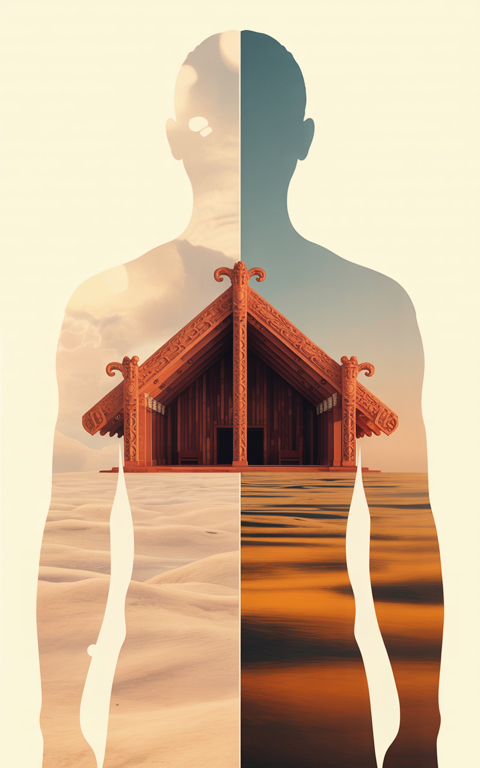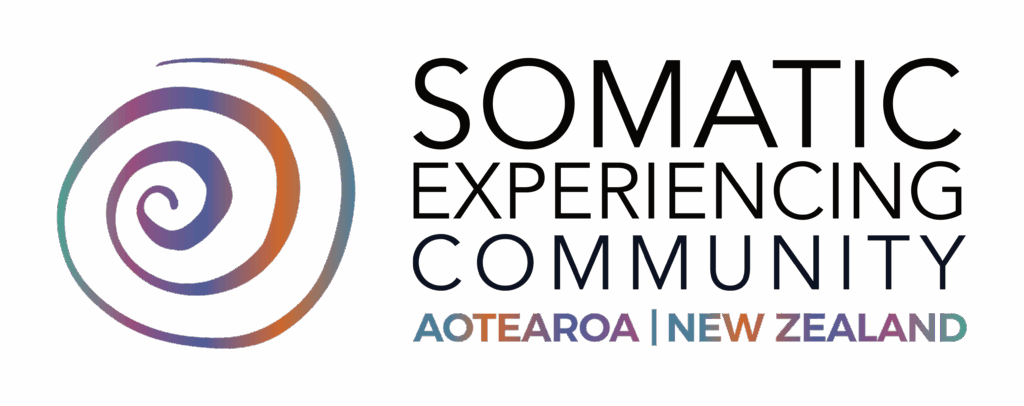Home » Reflections of a psychologist: integrating Somatic Experiencing® into my practice
Article Author: Carien Lubbe-De Beer
My introduction to Somatic Experiencing® (SE) came through a dear colleague of mine. She shared how SE had given her an extraordinary appreciation for the nervous system, unlike any other training she had experienced. There was something in the way she spoke that tugged at a heartstring, and I felt compelled to discover the same appreciation for myself.
Experiencing SE sessions, both as a participant and observer, revealed to me the subtle yet profound changes it could bring about, in myself and in clients. SE’s focus on “soma,” or the lived experience of the body, has only recently gained prominence in psychology. Over the past decade, I have witnessed a growing acknowledgement among psychologists and therapists of the body’s central role in healing.
Professional Training and Validation
In South Africa, where I first trained in SE, the program was delivered by psychologists and strongly aligned with professional standards and development requirements. This contributed to SE gaining credibility locally. When I continued my training in New Zealand, I encountered a more multidisciplinary cohort, which broadened my perspective and enriched my learning with body-oriented approaches. International research and an evolving practice-based evidence base now lend strong support to integrating SE within psychology, especially as neuroscience deepens our understanding of trauma and memory reconsolidation.

The importance of the body from a cultural perspective
Practising psychology in New Zealand has exposed me to Te Whare Tapa Whā[1]. Therefore, I am curiously exploring how the intersection of Te Whare Tapa Whā and Somatic Experiencing influences Taha Tinana and Taha Hinengaro, and indirectly, on a more subtle level, Taha Wairua and, by implication, Taha Whenua.
The concept of embodied knowing also emerges in “Rongo.” As McLachlan et al. (2024, p.3) state, “Rongo is connected to all types of sensory information and knowing and may also be experienced as an internal sensation that eludes precise definition… and understanding internal sensations as located within the body, rather than exclusively within the roro (brain).” This supports the kaupapa Māori (Māori-centred) focus on Taha Tinana. The “physical being” of someone supports their essence and cannot be separated from the aspects of mind, spirit, and family. It is this physicality, the essence of being spirit (Wairua) and mind/ emotion (Hinengaro) within a body (Tinana), that I argue trauma affects and needs attention in the therapeutic process.
Gendlin (1997, in Winhall & Porges, 2022, p. 18) describes the “felt sense,” an embodied, implicit knowing beyond conscious awareness. Clients who progress in therapy often have a connection to this bodily knowledge, though it may be vague at first. By turning inward and paying attention to bodily sensations, a holistic sense of a situation emerges. Levine (1997, p. 8) describes the “felt sense” as the vehicle for self-experience. While natural, embodied awareness can be challenging in a disembodied culture. Payne et al. (2015, p.1) add: “We emphasise the importance of taking into account the instinctive, bodily based protective reactions when dealing with stress and trauma, … as a supplement to cognitive expressive based therapies.”
[1] https://mentalhealth.org.nz/te-whare-tapa-wha
Te Whare Tapa Whā is a Māori health model developed by leading Māori health advocate Sir Mason Durie in 1984. Te Whare Tapa Whā depicts wellbeing as a wharenui or meeting house. The four walls of the wharenui represent the four dimensions of holistic wellbeing.
https://www.tepūkenga.ac.nz/te-pae-ora/living-well-learning-well/te-whare-tapa-wha#:~:text=Te%20Whare%20Tapa%20Whā%20describes,Whānau%20%7C%20Family%20and%20social%20wellbeing
Clients learn to value this relationship between thoughts and body, and how it affects each other.
For example, in one session, a client reported: “if I sense into it… I do feel that, I sense that in my body. Yeah. Interesting. It is, like, just to be aware of how different your body feels when you’re thinking about different things. “
This requires practitioners to slow down and introduce new material gradually (titration), since clients are often unaccustomed to this approach. In SE, titration means carefully exposing clients to traumatic material in small, manageable pieces to avoid overwhelm. I have come to learn that less is more, and slower is better in trauma work. Trauma occurs when experiences are “too much, too fast, too soon”; thus, in SE, we intentionally slow things down, working with small fragments and pausing to notice the body’s reaction. This allows the body to naturally complete protective responses that were previously thwarted.
Let me get practical!
SE has transformed how I start therapy. Orienting and proximity are now central. Clients choose where to sit, allowing their nervous systems to guide the choice. Explicitly acknowledging this—playfully—introduces the felt sense and how our bodies show up in daily life. Orienting to the room and space helps me see if a client is ready for exploration or if their nervous system is defensive. Through subtle observation, I can recognise nervous system states and help clients notice them too. Orienting is a valuable resource, and it fosters attunement, attachment, and safety.
Somatic resourcing is another entry point, such as guiding clients to find something visually pleasing in the room. Many feel relieved, as it shifts the focus from pressure to talk to simply noticing what is pleasant or comfortable. This approach models a search for strengths and resources.

In online sessions, I adapt by encouraging clients to break eye contact as needed and to stay connected with their physical surroundings. Both orienting and resourcing are easily transferable to teletherapy.
By now, I am sure many psychologists resonate with this way of working. Despite the integrative nature of this work, my primary focus remains nervous system health. Though I cannot capture all SE principles here, these glimpses reflect my approach.
The real essence of SE, for me, is noticing the body’s relief when it is acknowledged.
This indeed is something that I value as sacred. It usually expresses as tears in the room, sighs of relief, the deepening of the breath, a softening of the tension and bracing held in the system, and an openness and expansion.
Supporting clients with psychoeducation helps integrate this work. Using invitational language supports their sense of choice and agency. Invitational language to support choice and control is also something I had to work on as I started on the SE journey, and I continue to hold it at the forefront of my mind. Sometimes, however, clients become annoyed or fatigued by frequent inquiries into bodily sensations.

Case Vignettes
I want to share[1] some vignettes from clients’ therapeutic processes and feedback, to allude to some shifts that are possible.
[1] Permission/ consent obtained from the relevant clients
With another client, we explored Affect (A) and sensation (S), as she recalled a traumatic memory. She noticed jitteriness linked to shock and connected with anger, sadness, and grief. This led to an earlier memory of neglect and unmet needs. As she remained with these feelings, a more positive image and sensation of warmth and love emerged, demonstrating the integration of emotion and sensation.
Memories that emerged and the emergence of unmet needs refer to the Meaning (M) channel, and are often the focus of psychological therapy. When we focus on sensation (S), it frequently allows deeper issues to emerge, which can then be explored and integrated, leading to insight and the opportunity to reconsolidate memories, offering new meaning.

A third client was coping with trauma from a medical procedure and felt her right arm was disconnected and numb. We stayed with the sensation(S), pendulating between her arms to notice contrasts. She described her right arm as heavy and cold, like stones at the bottom of a lake (the Image channel). As we gently explored these sensations, fear surfaced: “what if I can never move my right arm again?” We proceeded slowly, tracking sensations and impulses for movement (Behaviour channel), and an image appeared of a heavy casket pressing on her shoulder and chest. Working slowly and noticing subtle sensations and impulses towards movement, we explored whether ease from her left side could be imagined flowing into her right. Suddenly, her elbow released, and with that movement, warmth returned. A memory surfaced of coming out of a coma and being unable to speak as she was rolled over to her side. Together, we reenacted the movement of freeing her arm, affirming her capacity to act in the now, the present moment. Gradually, her two hands could meet in connection, and both arms felt relaxed and integrated.
Summarising thoughts
As can be seen in these vignettes, SE as a regulation-informed approach involving small increments, allowing for more subtle changes. It alludes to the value of slow-paced therapeutic work. I have come to a renewed appreciation for processing nonverbal, body-based emotional communication, which occurs moment by moment and often below the level of conscious awareness, beyond what is conveyed through words. As Schore (2022) states, the therapist offers “emotional feedback” in a “right brain-to-right brain emotion communication system,” highlighting the crucial role of attunement. This in turn, can change the client’s unconscious self-image and internal working model of attachment.
Perhaps the greatest benefit of incorporating Somatic Experiencing (SE) into my psychology practice has been its impact on my own growth. I have learned to notice my own regulation and dysregulation, to expand my capacity, and to draw from a deeper energy well. This has helped me tremendously to sit with people’s pain and despair without becoming overwhelmed. Even more powerful is my own experiential knowing on how SE has helped me through troublesome life experiences.
SE is not always the right approach for every client, and at times, familiar methods like (good old-fashioned) CBT are more appropriate. Yet the sessions I value most are those where clients can remain present, notice their experience, and track their sensations, thoughts, emotions, and images. Together, we engage in cycles of pendulation, activating and renegotiating defensive responses, enabling the nervous system to move toward completion and healing. In these moments, something shifts—pain eases, heartache softens, and healing becomes possible.
References
- Levine, P. A. (1997). Waking the tiger: Healing trauma. Berkeley, CA: North Atlantic Books.
- Levine, P. A. (2008). Sexual healing: Transforming the sacred wound. Boulder, CO: Sounds True.
- Levine, P. A. (2015). Trauma and memory: Brain and body in a search for the living past. Berkeley, CA: North Atlantic Books.
- Levine, P. A. (2019). Healing trauma: A pioneering program for restoring the wisdom of your body. Boulder, CO: Sounds True.
- Schore, A. N. (2022). Right brain-to-right brain psychotherapy: Recent scientific and clinical advances. Annals of General Psychiatry, 21(1), 46.
- Spermon, D., Darlington, Y., & Gibney, P. (2010). Psychodynamic psychotherapy for complex trauma: Targets, focus, applications, and outcomes. Psychology Research and Behavior Management, 3, 119–127.
- Watkins, L. E., Sprang, K. R., & Rothbaum, B. O. (2018). Treating PTSD: A review of evidence-based psychotherapy interventions. Frontiers in Behavioral Neuroscience, 12, 258. https://doi.org/10.3389/fnbeh.2018.00258
